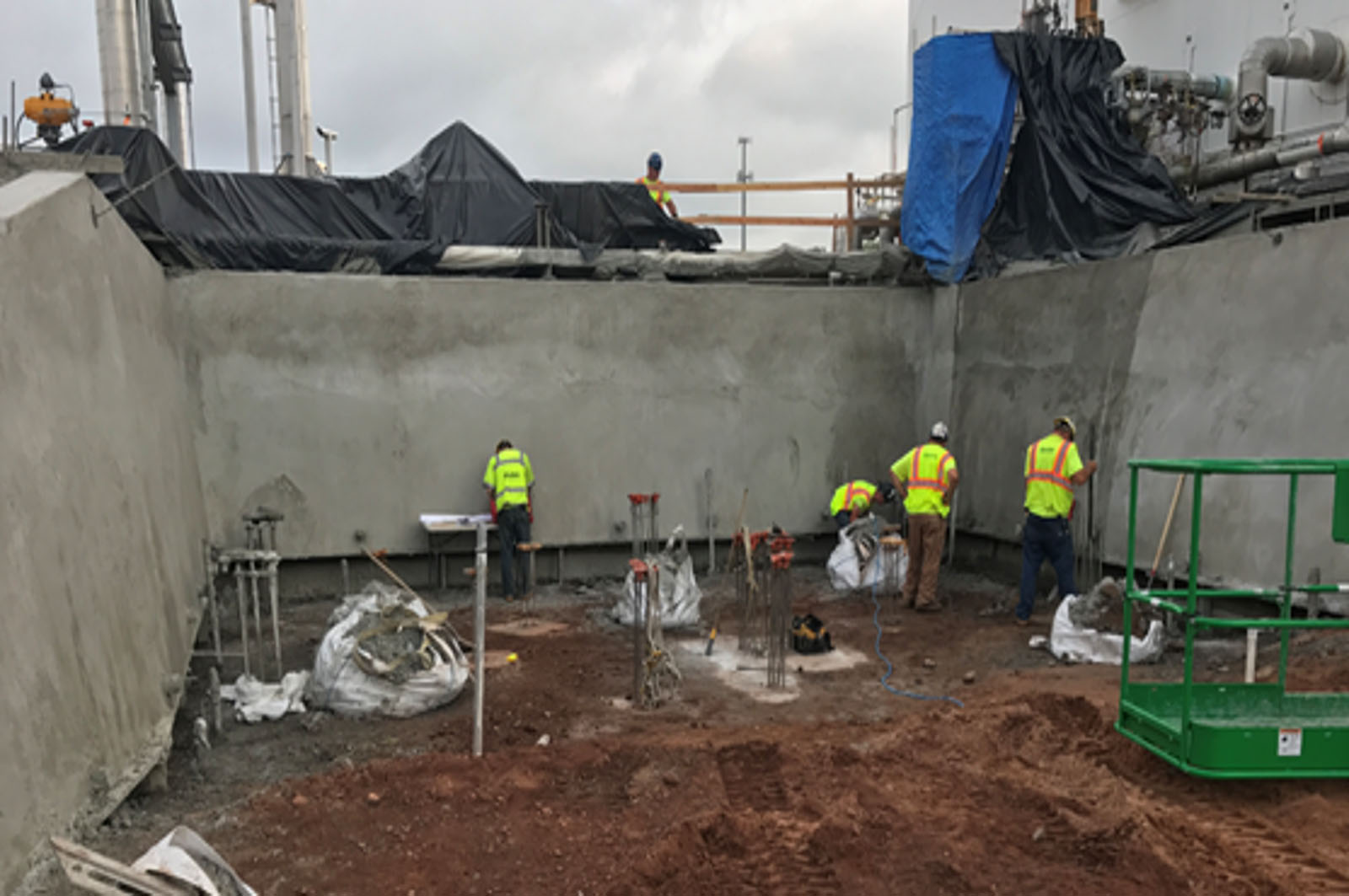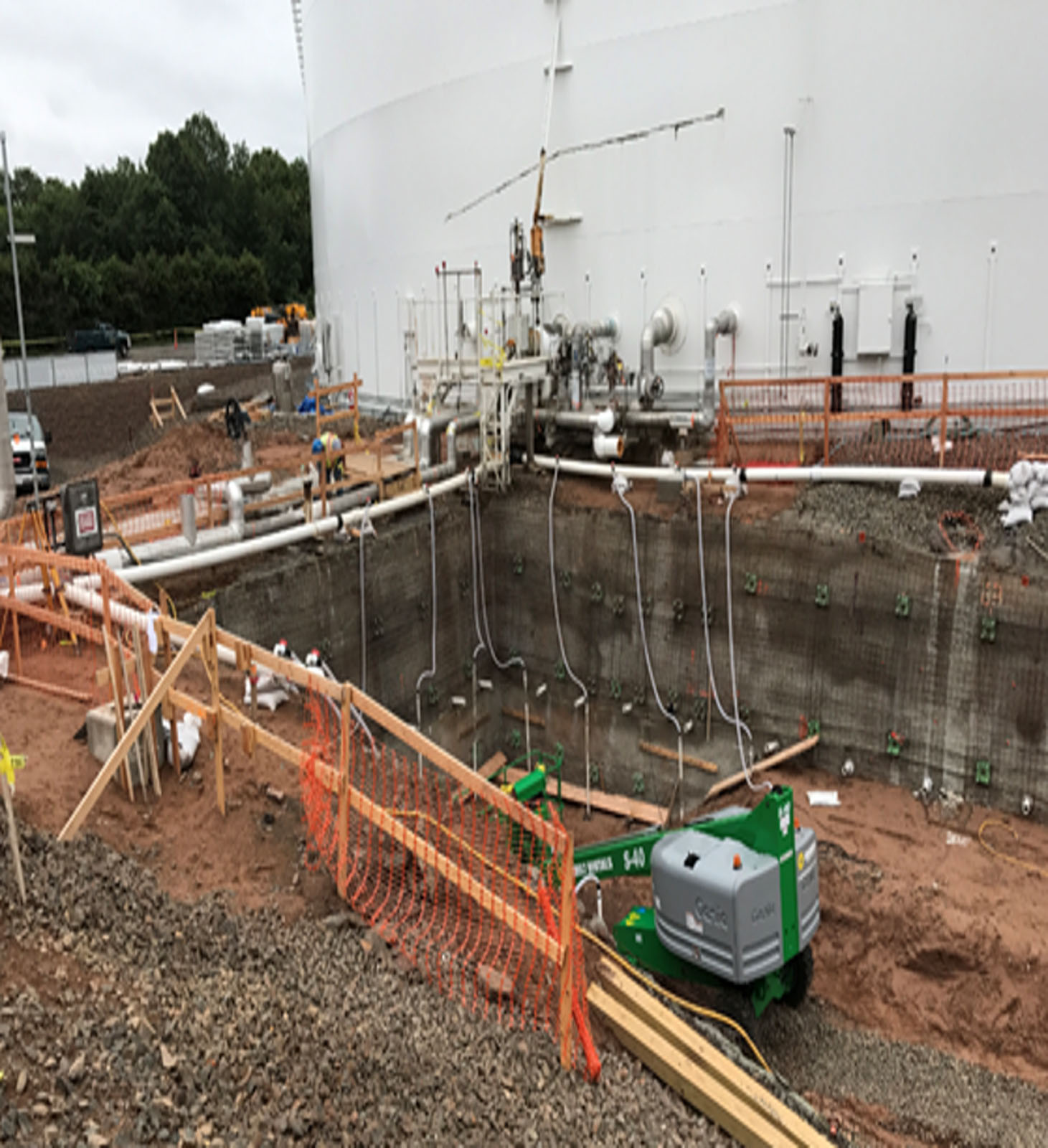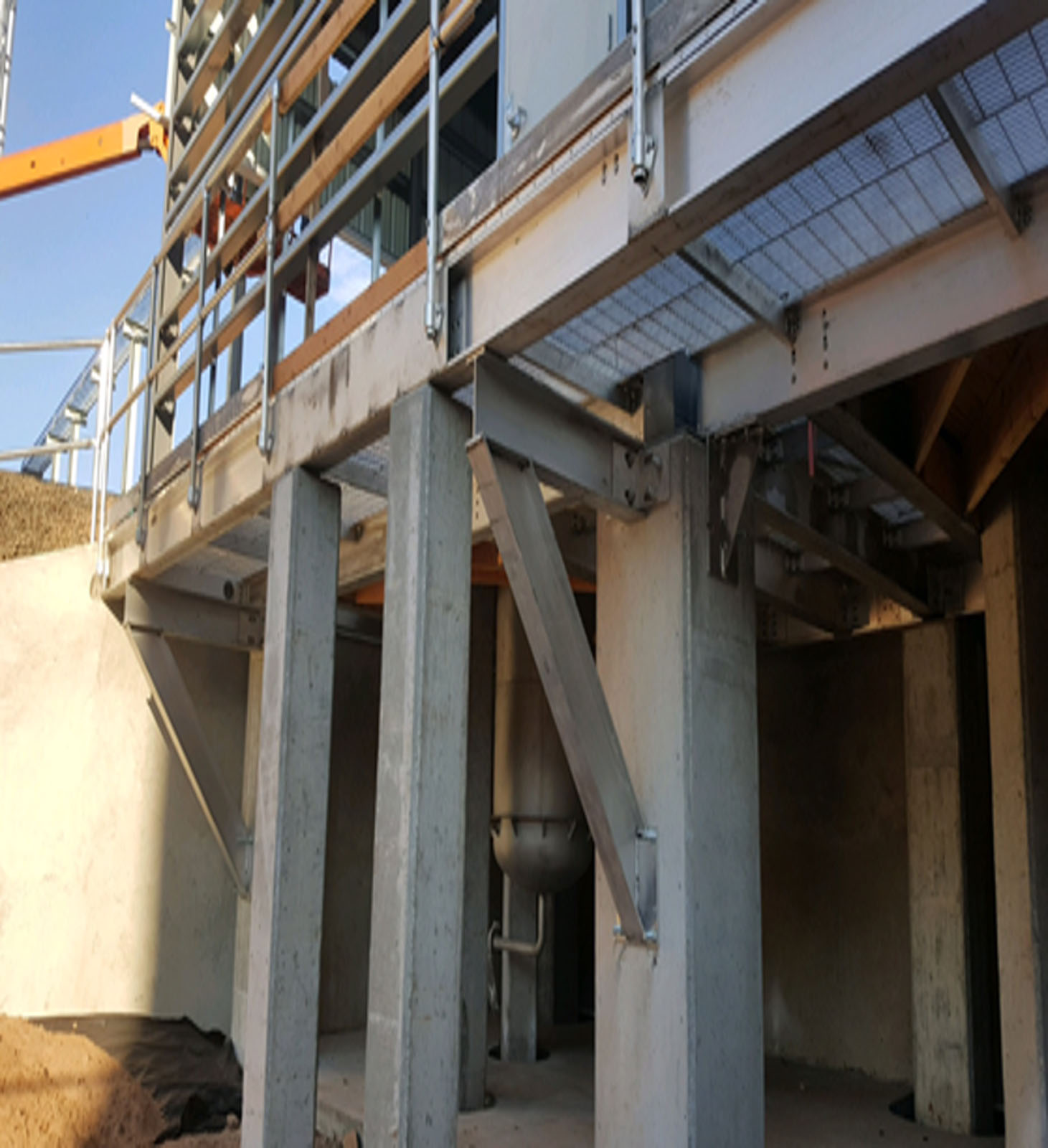LNG Facility: Pump Replacement Project

Project at a Glance
Service:
Engineering, Design, Drafting, Survey, Project Management
Location:
Connecticut
Completion Date:
2017

Engineering, Design, Drafting, Survey, Project Management
Connecticut
2017
The Pump Replacement project for an LNG facility in Connecticut included many engineering challenges that are likely to be encountered in life-extension projects. For this project, Cornerstone served as Engineering lead to a contractor led EPC. In addition to the expected SIMOPS challenges, the pump replacement required a creative solution to a vexing LNG plant problem. The new LNG pumps are of much larger capacity and larger size, measuring over nine feet tall. To maintain strong suction head from the existing LNG tank the pumps were installed below the elevation of the existing pumps. This required substantial excavation immediately adjacent to the operational LNG tank. The potential hazards included vibration damage to the tank bottom insulation system, and subsidence and settling of the tank ring wall foundation. Both these hazards were mitigated using soil-nail excavation. This is a technology often used in highway and urban building construction but has not been previously applied in an LNG plant. Instead of digging a large hole using sheet piling and excavators, then building up the concrete walls from the bottom, soil nail construction allows for the walls to be placed from the top down. This mitigates most of the vibration risk by eliminating sheet piping and eliminates the risk of subsidence by permanently stabilizing the excavation with concrete as the hole progresses downward.
In Figure 1, the soil nail method is seen being used to create an excavation approximately ten feet deep, with one edge less than six feet from the operating LNG Tank. The walls are coated in concrete, supported by long steel “nails” that are drilled and grouted perpendicular to the wall face to act as tiebacks. Several of the nails extend directly under the LNG tank ring wall foundation.

In Figure 2, the completed pump support structure and pump shelter supports extending up from the bottom of the excavated area are visible.

In Figure 3, the finished inside face of the wall is shown. Foundations to support the new larger pumps were constructed at the bottom of the excavated space to align the top inlet and outlet piping with the existing plant pipe rack seen on top of the excavation. In the background, one of the new LNG pumps is visible prior to insulation.

Cornerstone’s experience at this facility and on other LNG plant lifeextension EPC projects makes us uniquely qualified to deliver safe, reliable and durable facility designs for LNG operators and developers.